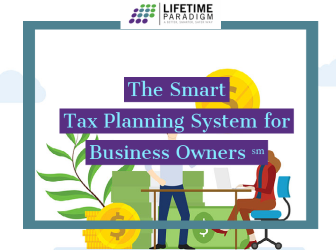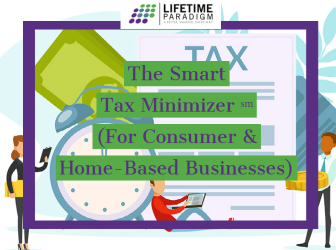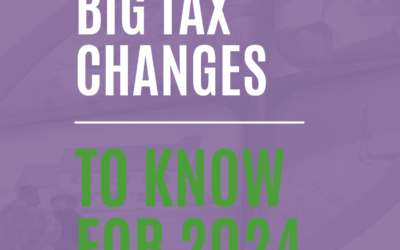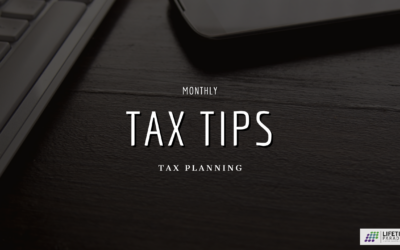Tax Planning
Know These Four Magic Business Mileage Rules
Bradford Tax Institute
When you know the rules related to business mileage, you:
- protect yourself in the event of an IRS audit, and
- pay less tax.
Take Henry, for example. Before he knew the mileage rules, he deducted 30 percent of his SUV’s cost. Once he learned the rules, he deducted 92 percent.
Or look at poor Mark—he lost almost all his vehicle deductions in an IRS audit.
Be like Henry. Here’s how.
Start with this brief four-question quiz on the mileage rules that apply to your business (regardless of business type).
Question 1. To help manage your business, you have an administrative office in your home that you deduct on your taxes. To deduct the trip that takes you from your home to your office outside the home, you must first use your office in your home. Thus, you need to go into your home office and make a phone call or boot up the computer and check your emails so that you can deduct your trip from your home office to your downtown office. True or false?
Question 2. You have no deductible office in the home, but you do have an office outside the home. You stop at the grocery store on the way to your outside-the-home office to buy cleaning supplies for your office. You may deduct the mileage from the grocery store to the office as business mileage. True or false?
Question 3. You have no office in your home that you can deduct, but you do have an office outside the home. While you are at home, you remember that you need a new printer cartridge for your office printer. You jump in your vehicle and drive to and from the office supply store, where you buy a printer cartridge. This trip produces deductible business mileage. True or false?
Question 4. You operate your business with no office that you can deduct. That is, you have no deductible office in the home and no deductible or other office outside the home. Your round trip from your home to a business meeting downtown is not deductible. True or false?
Answer 1. Trip from Home Office to Regular Office
False. You don’t need to do anything in your home office before going to your outside-the-home office, assuming both offices are for the same trade or business. The fact that you have a principal office (your administrative office) inside the home means the trip from your home to your office outside the home is deductible.1
Answer 2. Stop at the Grocery Store on the Way to the Office
False. Your trip from your home to your regular office is a personal commute. The grocery store does not meet the “temporary work location” definition, as this was not a place where you performed services. Thus, on this trip, your only business mileage is that mileage to and from the grocery store for business supplies that is in excess of your normal commuting mileage.
Example. Your trip from home to your office is 11 miles, but when you make the grocery store stop, the trip is 15 miles—eight miles to the grocery store and then seven miles to the office. Thus, you have four business miles (15 minus 11).
Answer 3. Round Trip to Office Supply Store
True. Here, we hang our hat on two rules. First, because you have an office outside the home, the IRS allows business mileage for trips to temporary work locations. 2 Although the office supply store does not rise to the level of a temporary work location for performing services, you have no reason other than business to make this trip. Therefore, this mileage should qualify as “ordinary and necessary” business mileage.3
Answer 4. Round Trip to Business Meeting
True. The no-office taxpayer incurs a personal non-deductible commute to his or her first business stop and from the last business stop back home.4 In this case, the business meeting is both the first and the last stop, and it produces only personal, non-deductible commuting mileage.
Do This
Personal mileage means death for business vehicles.
Kill personal mileage. Install the right type of home office, called an administrative office. Installation is pretty easy.
Less Desirable
If it is not practical for you to establish an administrative office in your home, then you need to pay close attention to the temporary work location rule. This rule allows you to deduct trips from your home to a temporary work location and also to deduct trips from that temporary work location to your regular office.
Planning note. A temporary work location is not a stop at the post office every morning to pick up the business mail on the way to the office. You may deduct the out-of-way mileage to get to the post office as business mileage, but the post office is not a work location where you are rendering services.
Beware of Multiple Offices
You could have a number of regular business locations. In fact, you could have a regular location without being there every week or even on a set schedule.
For example, say a doctor has an office, practices at a clinic, and also practices at a hospital. How many regular offices could this doctor have? Answer: three.
Thus, with no principal office in his home, the doctor’s trip from home to any one of the three—the hospital, the clinic, or the office—would be a personal, non-deductible commute.5
Best Practice
If this doctor wants to avoid the commuting problem, he needs an administrative office in his home so that his trips from his home to any one of these locations will be deductible.
Work Location to Work Location
Regardless of whether he has an administrative office, this doctor may treat the mileage he drives from his regular- stop clinic to the regular-stop hospital as business mileage.6 Here, he is driving from one work location to another.
Similarly, he treats as business mileage the trips to temporary work locations, including trips he makes from both his personal residence and his regular work locations.’ For example, this doctor drives from his home to a patient’s home to make a house call. This trip from home to see the patient is a business trip to a temporary work location.
Temporary Work Location Rule to Know
The IRS defines a “temporary work location” as any location where you perform services for one year or less.8
Should you have a location to which you go year after year, that location can still be a temporary work location if you spend less than 35 workdays there during the calendar year.9
Track Your Mileage
Mileage is the only acceptable method for determining business and personal use of your vehicles. Make certain that you know when a mile is a business mile and when it is a personal mile.
There are two reasons to know the mileage rules:
- Knowledge of the rules can add big dollars to your tax refunds.
- Without knowledge of the mileage rules, in an IRS audit, you first lose deductions and then experience an increase in audit scope, because the IRS is now aware that you don’t know what you are doing.
Takeaways
When you know how to increase your business miles, you can add substantially to your bottom line.
Think of it this way: You are going to drive your vehicles where you want to drive them, regardless of the rules. That’s the way you operate, whether for work or in your personal life.
Now, let’s step back and look at where you drive. What rule can you apply to turn as much mileage as possible into business mileage?
You have to take a serious look at the possibility of creating an administrative office in your home. The administrative office simplifies the rules on temporary stops, and it eliminates commuting from your home to your regular business stops.
In perspective, the administrative office can make your business mileage simple, easy, and profitable.
Finally, on most every business and personal use vehicle, you need a mileage log—period.
1 IRS Pub. 463, Travel, Entertainment, Gift, and Car Expenses (2020), P. 13.
2 Rev. Rul. 99-7.
3 IRC Section 162.
4 Walter R. Strohmaier v Commr., 113 TC 5; IRS Pub. 463, Travel, Entertainment, Gift, and Car Expenses (2020), p. 13.
5 Rev. Rul. 90-23 as modified and superseded in part by Rev. Rul. 99-7.
6 Ibid.
7 Ibid.
8 Rev. Rul. 99-7.
9 CCA 200026025.
Related Newsletter: 14 Tax Reduction Strategies for the Self-Employed


SERVICES WE OFFER RELATED TO THIS TOPIC
The information contained in this post is for general use and educational purposes only. However, we do offer specific services to our clients to help them implement the strategies mentioned above. For specific information and to determine if these services may be a good fit for you, please select any of the services listed below.
For more information on tax planning, visit our Tax Planning page to see our list of services.
Big Tax Changes to Know for 2024
Financial Guides2024 has brought some big tax changes with it. It’s essential to stay informed about these...
The Smart Tax Planning Newsletter March 2024
Tax PlanningIn This Issue: IRAs for Young Adults Get Up to $32,220 in Sick and Family Leave Tax Credits New Crypto Tax...
2024 Key Planning & Investment Deadlines for Q2
Financial GuidesSpring is coming and to keep you financially organized for Q2, we are providing you with our Spring...








